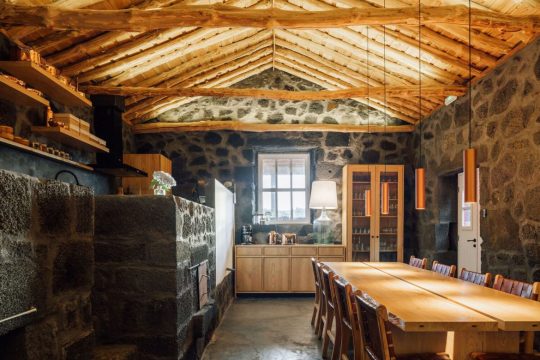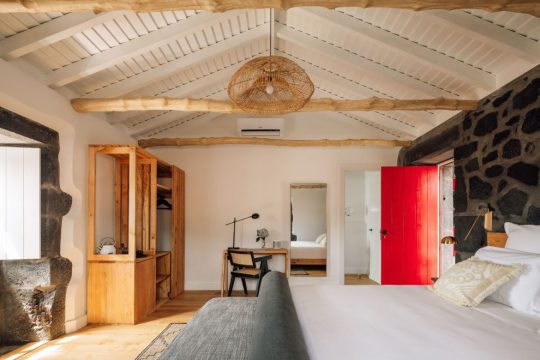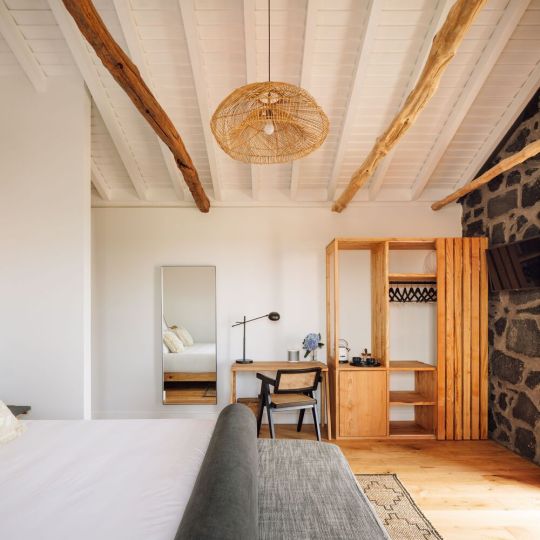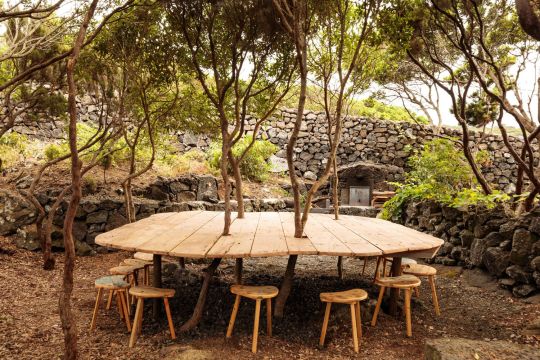Himbo with A heart I’m Leo (he/him 24) ͏╱|、(˚ˎ 。7 |、˜〵 じしˍ,)ノ
Don't wanna be here? Send us removal request.
Text
if You Come with me I can help you with some of these things, the nymph said, seeming To have seen the way I saw myself there in the still pool of water: hair long, scraggly, tangled and dirty: my skin turned pale and dull from melancholy. Already I had felt the gravity in my hips that I would soon start bleeding and there was no one else to turn to. can you help me? they said, remember your fish body, and at Once i swam more joyously than when I was a child: there Was nothing to hold Me back And the water was at my aid.
at the touch of their hand I was again myself in The dwelling of the nymph. they bathed me in rainwater steeped with rosehips and peppermint And combed my hair free. While doing this, the nymph began to speak:
There hasn't been someone like you here in many years. Long ago we, the nymphs and sprites of this place who keep it fresh, were forbidden from allowing you here.
soft and shining they set me in front of a great mirror and I was given a shallow bowl of tea to drink while they rubbed my skin with sweet smelling oils. I had a sister with a tragic wish said the nymph.
With great care and skill the nymph gathered My hair to the back of my neck and wove it into an intricate braid, decorating it with flowers and bits of shells.
They crushed pomegranate seeds into a small bowl and lightly painted my lips and cheeks to a deep blush. From a beautiful box they brought out a razor made from mother of pearl. in One swift gesture the nymph took the braid in their hands and cut it off, laying it to the side. cool air brushed the back of my neck, warmth began budding in my chest and i continued to sip the tea of the nymph. in awe i watched the mirror as they began to arrange my hair, making little snips here and there, i looked so changed yet more myself than i had ever felt.
this is who you are, they said; you become nothing, you are who you have always been.
there was a chest of wood in front of us and the nymph opened it leaving me to gasp again: it was full of beautifully made boys' clothes. by now the warmth had spread throughout my body, and i wondered if i was feeling excitement. the urgency with which i felt the weight of the world in my hips had long gone. it occurred to me to be aware of my body and i saw myself in the mirror, as the nymph had stepped away and i was wearing nothing. i looked like a boy. i looked like my brother. my heart jumped and i turned away, but the nymph took my face in their hands.
what you are feeling is joy. you may not be used to it, and you may not think you deserve it, but you do.
the nymph laid out a shirt and pants in front of me. it felt strange to pick them up when i had been reprimanded for the same so soon before my meeting with the nymph. how do i know people will believe me? i asked the nymph. do i have to always tell everyone who i am? what if they reject me? why can't i just be me...
They didn't answer, only helped me to get dressed. my confusion deepened and i wondered why they were doing this for me. but i couldn't deny that as i dressed myself in these fine clothes i looked very handsome. your godfather, they said. this is all from your godfather.
i never knew i had a godfather, only that my father always said he asked the first man he saw on the street after i was born, and that it was Saint Anthony.
the nymph studied me with care. finally they spoke: anthony. be known, anthony. i was struck by a bolt of energy. anthony. anthony. he looked back at me in the mirror. anthony. i was anthony. inside me something opening. warming up, waking up. for a moment, i believed myself.
you will be believed, the nymph said gently. you will have a new home and you will be believed. finally i let myself feel the way i felt at seeing myself in the mirror: joy. i will have a new home. i will be believed. i was crying.
the nymph wiped my tears away with their fingertips. they looked at me so tenderly and i wanted to be held by them. time for us to go, they said.
0 notes
Text
The witches are evil, yes. It is said that when a couple has seven children, and they are all girls, the last one is going to be a witch (it was common for people to have that many children, but it was also common to try to stop before that so they wouldn’t make a witch) and there’s even a tricky situation when the seventh pregnancy is of twins, because one has to know which one was born first, and the parents have to take the baby to be like ‘blessed’ (it’s between apostrophes because there’s no real translation for the word) by this woman that is sort of a witch but not quite and hits people with bunches of herbs, they’re my culture’s healers, actually (they’re called benzedeiras) and by ‘my culture’ I mean the specific region in which I was born, as in the island and some other towns around (google has informed me that the english name for the culture is Azorean, it’s originated from the islands or archipelago of the Azores in Portugal 🗾 but they don’t have witches, only we do). 😈
**not my writing!!
0 notes
Text
mouras encantadas
The Enchanted moura or moura encantada (enchanted female Mouros) is a supernatural being from the fairy tales of Portuguese and Galician[1] folklore. Very beautiful and seductive, she lives under an imposed occult spell. Shapeshifters, the mouras encantadas occupy liminal spaces and are builders with stone of formidable strength.

According to Portuguese, Galician, and Asturian mythology, the Mouros or Moiros are a race of supernatural beings which inhabited the lands of Galicia, Asturias and Portugal since the beginning of time.
For unknown reasons they were forced to take refuge under the earth, and now they are usually seen by people in the surroundings of castros and long barrows. The Mouros work with gold, silver and gemstones with which they make up enormous treasures that are protected by cuélebres.

The Mouros do not usually go out of their dwellings, except for taking food, and also in special dates like Midsummer.
The philologist Isodoro Millán argues that the term Moor comes from the Celtic mrvos akin to the Indo-European term mr-tuos, whence the Latin mortuus. This would relate the Moors to races already extinct, dead.
However, the word mouro is also a synonym of Muslim. Since the Iberian peninsula was occupied by Muslims for many centuries, it might potentially refer to young Muslims slain in battle.
The Mouros encantados some times appear as giants or warriors, and they include the legend of the moura encantada and the legend of the mourinhos or maruxinhos, a very small elf like people who live under the ground.
The enchanted Moura often appears singing and using a golden comb on her beautiful long hair, the colour of gold or black as the night, promising to give treasures to whomsoever sets her free by breaking her spell.
According to José Leite de Vasconcelos, mouras encantadas are “beings compelled by an occult power to live on a certain state of siege as if they were numb or asleep, insofar as a particular circumstance does not break their spell”.[2] According to ancient lore, they are the souls of young maidens who were left guarding the treasures that the males, mouros encantados (enchanted mouros) hid before heading to Mourama.
They are shapeshifters and there are a number of legends, and versions of the same legend, as a result of centuries of oral tradition. They appear as guardians of the pathways into the earth and of the "limit" frontiers where it was believed that the supernatural could manifest itself. Mouras encantadas are magical maidens who guard castles, caves, bridges, wells, fountains, rivers, and treasures.

José Leite de Vasconcelos considered as a possibility that the mouras encantadas may have had assimilated the characteristics of local deities, such as nymphs and spirits of nature. Consiglieri Pedroso also referred to the mouras encantadas as "feminine water genies".
The fairy tales featuring mouras encantadas are thought to be of pre-Roman, Indo-EuropeanCeltic origin. They are related to other Indo-European, and especially Celtic, female divinities of the water. Almost every Portuguese or Galician town has a tale of a Moura Encantada.The lore of the mouros encantados is used to find prehistoric monuments and was for some time used in the 19th century as the main method to locate Lusitanian archaeological "monuments", as Martins Sarmento viewed these as a kind of folk memory that was erased with Christianization.
Princesa moura

Princesa moura appears as a snake with long blond hair. In some fairy tales, the beings are beautiful Muslim princesses (princesa moura where moura comes from Moors) who live in castles at the time of the Reconquista or, Reconquest, and fall in love with a Portuguese Christian knight. In other fairy tales, a moura encantada lives in a castle under the earth and falls in love with a Moor instead of the Christian knight. These two variations are found only in Portugal. Many of these legends try to explain the origins of a city or invoke historical characters, other legends present a religious context. In the historical context, these places, people and events are situated in the real world and in a specific time frame. It is believed that real historic facts have merged with old legend narrations.
Moura-fiandeira
In other variants, the moura encantada is a spinning maiden moura (moura-fiandeira), who carries stones on her head to build the hill forts while she spins the yarns with a distaff that she carries at her waist. Mouras encantadas were believed to be the builders of the Paleolithic hill forts, the dolmens, and the megaliths. They are believed to still live there. The ancient coins found on the hill forts were called "medals of the mouros". The Pedra Formosa found on Citânia de Briteiros was, according to folklore, brought to this place by a moura who carried it on her head while she was spinning with a spindle. They are also night weavers, but only the sound of weaving can be heard in the night.
Pedra-Moura

Pedra-moura are mouras encantadas named for living inside stones. It was believed that who ever sat on one of these stones would become enchanted, or, that if any enchanted stone was taken to a house, all the animals in the house could die. It was also believed that pedras mouras had enchanted treasures inside them. There are several legends where the moura, instead of being a stone, lives inside the stone. In Portuguese lore it is said that you can walk into or walk out of certain rocks, possibly related to the moura legends. The moura is also described as traveling to Mourama (an enchanted place) while sitting on a stone that can float in the air or water. Inside caves, under rocks and under the earth, many legends say there exist palaces with treasures. According to Thurnwald (cited in McKenna, 1938), it was not uncommon among the people of pre-Roman Iberian Peninsula to believe that the souls of the dead dwell in certain rocks.

The almas dos mouros or alminhas dos mouros (souls or little souls of the mouros) was the name given to the votive aras, being alminhas the common name for the wayside shrine.
Moura-serpente
In some tales, the enchanted moura is a shapeshifter who takes the form of a snake or cobra (Moura-cobra); sometimes of a dog (cão), goat (cabra) or horse (cavalo). These moura snake may have wings and can appear as half woman and half animal and like to be offered milk.

Moura-Mãe
In some tales she is called Moura-mae or mother-moura, and takes the form of a charming young lady who is pregnant, and the narrative focuses on the search for a midwife to help at the birth and the reward that is given to the person willing to help.
Moura-Velha
The moura-velha is an old woman; the legends where she appears with the shape of an old woman are now infrequent.
Moura-lavadeira
Moura-lavadeira is a washerwoman but she is only seen putting white clothes out in the sun, contrary to the Lavandières who wash blood-stained clothes, the mouras are more like the lavadeiras.
Frades
Frades (lit: friars) are mouras encantadas who appear like friars dressed in white. Frades are white stone pillars.
Gold
The gold of the mouras may appear in various forms: figs, coal, skirts, hank of yarn, animals or tools. There are several ways to obtain this gold: it may be offered by the moura encantada as a reward, it can be stolen or found. Frequently the gold is inside a vase, hidden inside buried pans, or other receptacles, which has raised the question that this could be related to funerary urns. When there is a pot of gold there may also be together a pot of silver and a pot of plague.

St. John's Day
St. John's Day - midsummer - is the day that it is believed that the mouras appear with their treasures and you may break their enchantment. In some legends it is on Saint John's day that the moura encantada spreads figs or a hank of yarn on a large rock, in the moonlight. In other variations the moura spreads the figs or the golden hank of yarn in the sun on large rocks. These legends are possibly related with the popular tradition of, in some regions, of harvesting the “figo lampo” (a type of white fig that were offered as a gift in Saint John's day). This day marks the date of the summer solstice, its reference is perhaps reminiscent of some pagan sun-worship or spring time deity referenced as "São João o verde" (St.John, the green one).
Fountain
The fountain is one of the places where mouras encantadas appear frequently as serpents and magical properties are attributed to their waters as the Fonte da Moura Encantada. It is also a popular custom to say to those that marry in foreign lands that he “drank from the fountain” and fell in love, as an allusion to the legends where young men fall in love and are enchanted by the mouras.
Enchantment
The state of occult enchantment of the moura herself is generally caused by a male figure, her father or some other enchanted Mouro that left her to guard his treasures. Usually it is mouros that have the power to enchant the mouras. In legends, the mouras may appear alone, accompanied by other mouras or by a male being, a mouro, that may be her father, a beloved person or a brother.
Disenchantment
To break the spell of the moura she may ask for a kiss, a cake or bread with no salt, milk, the pronunciation of a certain word, or realization of some chore like not looking at something hidden. To fail means not to free the moura and dobrar o encanto (double the spell), lose the treasure or lose the beloved moura. The legends where bread is asked may be related to the old traditions of offering food to the dead. In the same way the offering of milk may be related with the offerings made to the waters and snakes. The old popular tradition mentions that snakes like milk. One moura legend of Formigais referred to the preference mouras had for milk.
The mouras, when disenchanted may become human and marry her savior or disappear. In the legends of the cinto da moura, after the disenchantment the Mouro tries to enchant the moura again and make the moura return to the mourama.
Mourama

Mourama is a magic place where the mouros encantados live under the earth in Portugal and Galicia. It is also believed that "In Galicia there are two overlapped people: a part lives on the surface of land; they are the Galician people, and the other in the subsoil, the Mouros." Mourama is the otherworld, the world of the dead from where everything comes back. The Mourama can be compared to the fairyland.
Tempo da mouraria
In the legends it is an uncertain time in the past, the same kind of time reference as “once upon a time” of fairy tales.
Funerary monuments

Funerary monuments are often associated with the mouras encantadas. In some regions, dolmens are popularly called mouras or Casa da Moura, (house of the maiden moura) and it is commonly believed that the mouras encantadas lived in those constructions. Normally, these supernatural beings are associated with the idea of the deceased. These can be compared to the legends of the Domus de Janas in Sardinia or the "Maison des Korrigans" in Brittany. Rock-cut graves are often called "Cova da Moura" or "Masseira" the latter term meaning the place where the "mouras kneaded the bread, they are also called "cama da moura" (bed of the moura).

Cadeira da moura
Moura's chair is a monolith with the shape of a chair thought to be a royal throne. The moura sits on the chair at night and every time the moura is going to get water she carries the chair under her arm.
1 note
·
View note
Text
7 motivos para conhecer a Fortaleza de São João Baptista, nos Açores

No último fim de semana de março de 2017, aconteceram as Jornadas Científico Pedagógicas em Angra do Heroísmo, Ilha Terceira, nos Açores. Foram dois dias de trabalho intenso de levantamento, caracterização, inspeção e diagnóstico da Fortaleza de São João Baptista, no Monte Brasil. O objetivo principal foi refletir e debater sobre as formas de valorização e salvaguarda deste ainda desconhecido patrimônio mundial.
Keep reading
3 notes
·
View notes
Text
youtube
found a creator in yt who films the process of herding bulls in terçeira the puppies in this one are so cute at the end the drink out of a really big bowl of water <3
0 notes
Text

Editing this altered my brain chemistry
2 notes
·
View notes
Text

[Image ID: a black and white typography edit that reads "don't want to see transsexuality? pluck out your eyes!" in the right bottom corner is a medical model of teeth. between the teeth is a single eyeball. the entire image is textured to look aged and photocopied. /End ID]
inspired by matthew 5:29
click for quality (instagram) (my shop) (as a print) (as a shirt)
14K notes
·
View notes
Photo

Mythical Beasts of the Iberian Peninsula.
by Neil Parkinson
599 notes
·
View notes
Photo










Adega do Fogo Holiday Home,
Lugar do Cabrito, Parish of Santa Luzia, municipality of São Roque do Pico, Island of Pico, the Azores, Portugal,
Diogo Mega Architects
105 notes
·
View notes




